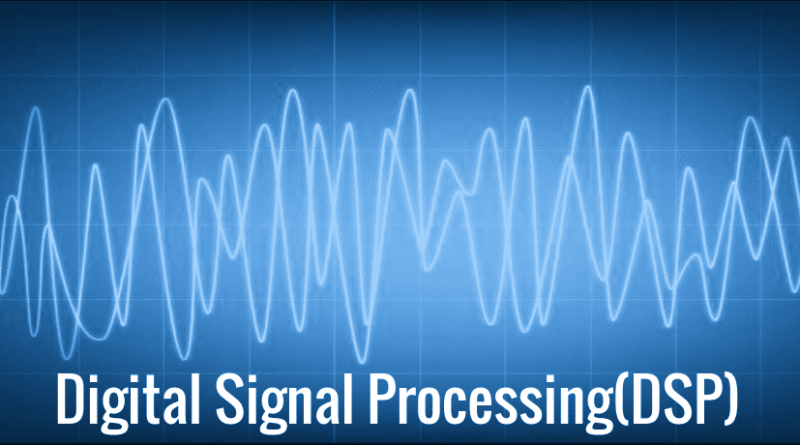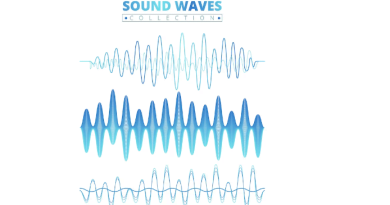What is Digital Signal Processing (DSP) – Explained
What is Digital Signal Processing (DSP) – Explained
Digital signal processing (DSP) is using digital processing, such as by computers or more specialized digital signal processors, to perform a wide variety of signal processing operations. The digital signals processed in this manner are a sequence of numbers representing samples of a continuous variable in a domain such as time, space, or frequency.
In other words, DSP involves taking real-world signals, such as voice, audio, video, temperature, pressure, or position, that have been digitized (converted into numbers) and then mathematically manipulating them to enhance them, extract useful information from them or transform them into another form.
For example, DSP can be used to:
- Reduce noise or interference in a signal.
- Compress or decompress a signal to save storage space or bandwidth.
- Encrypt or decrypt a signal for security purposes.
- Filter out unwanted frequency components in a signal
- Modulate or demodulate a signal for transmission or reception.
- Synthesize or analyze a signal for various applications.
How does DSP work?
DSP applies various principles and techniques of mathematics, physics, and computer science to digital signals. Some of the most common concepts and methods used in DSP are:
- Sampling: This is the process of converting an analog signal (a continuous variable) into a digital signal (a discrete variable) by taking periodic measurements of the signal’s amplitude at equal intervals of time. The sampling frequency is the number of samples taken per second. According to the Nyquist–Shannon sampling theorem, the sampling frequency must be at least twice the highest frequency component in the signal to avoid aliasing (distortion).
- Quantization approximates each sample value by a finite number of bits (binary digits). The number of bits used per sample is called the bit depth or resolution. The more bits used, the more accurate the representation of the signal, but also the more storage space or bandwidth required. Quantization introduces quantization error (noise) in the signal.
- Discrete Fourier transform (DFT): This is a mathematical operation that transforms a sequence of samples from the time domain (where each sample represents the amplitude of the signal at a given time) to the frequency domain (where each sample represents the amplitude and phase of a sinusoidal component at a given frequency). The DFT can be used to analyze the spectral content of a signal, such as its frequency components, harmonics, power spectrum, etc. The inverse DFT can transform a sequence of samples from the frequency domain back to the time domain.
- Fast Fourier transform (FFT): This algorithm computes the DFT efficiently and quickly. The FFT can reduce the computational complexity of the DFT from O(N2) to O(N log N), where N is the number of samples. The FFT can be implemented using various methods, such as radix-2, radix-4, Cooley–Tukey, etc.
- Z-transform: This mathematical operation transforms a sequence of samples from the time domain to the z-domain (a complex plane where each point represents a complex number). The z-transform can be used to analyze the stability and performance of discrete-time systems, such as filters, controllers, etc. The inverse z-transform can be used to transform a sequence of samples from the z-domain back to the time domain.
- Digital filters are algorithms that process a sequence of samples to modify or enhance certain signal aspects. Digital filters can be classified into various types based on their frequency response, such as low-pass filters (that pass low-frequency components and attenuate high-frequency components), high-pass filters (that do the opposite), band-pass filters (that pass a specific range of frequencies and attenuate others), band-stop filters (that do the opposite), etc. Digital filters can also be classified into various types based on their implementation, such as finite impulse response (FIR) filters (that have a finite number of coefficients and no feedback) or infinite impulse response (IIR) filters (that have an infinite number of coefficients and feedback).
- Digital modulation: This is the process of changing one or more parameters of a carrier signal (such as amplitude, frequency, phase, etc.) according to a digital message signal (such as bits or symbols). Digital modulation can transmit or receive digital data over analog channels, such as radio waves, optical fibers, etc. Digital modulation can be classified into various types based on the parameter or parameters that are changed, such as amplitude-shift keying (ASK), frequency-shift keying (FSK), phase-shift keying (PSK), quadrature amplitude modulation (QAM), etc.
What are the applications of DSP?
DSP has many applications in various fields and domains, such as:
- Audio and speech processing: DSP can enhance, compress, synthesize, recognize, or transmit audio or speech signals. Some examples of audio and speech processing applications are noise cancellation, audio coding, speech synthesis, speech recognition, voice over IP (VoIP), etc.
- Image and video processing: DSP can enhance, compress, analyze, recognize, or transmit image or video signals. Some examples of image and video processing applications are image enhancement, image compression, face detection, object recognition, video coding, video streaming, etc.
- Biomedical engineering: DSP can process or analyze biomedical signals, such as electrocardiogram (ECG), electroencephalogram (EEG), blood pressure, glucose level, etc. Some examples of biomedical engineering applications are heart rate monitoring, brain-computer interface, glucose control, medical imaging, etc.
- Telecommunications: DSP can modulate or demodulate digital data over analog channels, such as radio waves, optical fibers, etc. Some examples of telecommunications applications are cellular networks, wireless networks, satellite communications, visual communications, etc.
- Radar and sonar: DSP can process or analyze radar or sonar signals, such as electromagnetic waves or sound waves that are reflected or scattered by objects. Some examples of radar and sonar applications are target detection, target tracking, target identification, navigation, remote sensing, etc.
How can you learn more about DSP?
If you are interested in learning more about DSP, you can check out these resources:
- An Introduction to Digital Signal Processing – Technical Articles: A blog post that explains the basics of DSP and its advantages over analog signal processing.
- A Beginner’s Guide to Digital Signal Processing (DSP): A web page that provides a general overview of DSP and its applications.
- [Digital Signal Processing | Coursera]: An online course that covers the fundamentals of DSP, such as sampling, quantization, DFT, FFT, z-transform, digital filters, digital modulation, etc.
- [Digital Signal Processing – YouTube]: A video series that teaches the concepts and methods of DSP using MATLAB examples.
- [Digital Signal Processing | MIT OpenCourseWare]: A free online course that covers the theory and practice of DSP, such as discrete-time systems, frequency analysis, filter design, sampling, quantization, etc.
- [Digital Signal Processing | edX]: An online course that covers the basics of DSP, such as signals and systems, Fourier analysis, z-transform, digital filters, etc.
Frequently Asked Questions (FAQs)
1. What is Digital Signal Processing (DSP)?
- Digital Signal Processing (DSP) is a field of study and technology that involves the manipulation and analysis of digital signals, typically through algorithms and specialized hardware.
2. How does DSP differ from analog signal processing?
- DSP processes signals in a digital format (numbers) while analog signal processing deals with continuous analog signals.
3. What are the key applications of DSP?
- DSP is widely used in applications like audio and speech processing, image and video processing, communications, radar, medical imaging, and more.
4. What are some common examples of DSP in everyday life?
- Examples include noise-canceling headphones, smartphone camera enhancements, Wi-Fi routers, and speech recognition systems.
5. How does DSP improve audio quality in devices like headphones?
- DSP algorithms can reduce background noise, equalize sound, and enhance audio clarity, providing a better listening experience.
6. What role does DSP play in telecommunications and wireless communication?
- DSP is crucial for encoding, decoding, filtering, and error correction in communication systems, ensuring reliable data transmission.
7. How does DSP enhance medical imaging and diagnostics?
- DSP algorithms help improve the quality of medical images, such as MRI and CT scans, aiding in diagnosis and treatment planning.
8. Can DSP be used in music production and recording?
- Yes, DSP is essential in music production for effects processing, equalization, and audio compression.
9. Are there specific hardware components used for DSP?
- DSP processors and digital signal processors are specialized hardware designed for efficient signal processing tasks.
10. What is the importance of sampling and quantization in DSP?
- Sampling converts continuous signals into discrete values, while quantization assigns numerical values to these samples, enabling digital processing.
11. How is convolution used in DSP?
- Convolution is a mathematical operation used in DSP for tasks like filtering and modulation, altering signal characteristics.
12. Can DSP be performed in software, or is dedicated hardware required?
- DSP can be implemented in software, but dedicated hardware, like DSP chips, often offers faster and more efficient processing.
13. What is the role of Fast Fourier Transform (FFT) in DSP?
- FFT is a crucial algorithm in DSP that converts time-domain signals into frequency-domain representations, facilitating spectral analysis and filtering.
14. How does DSP contribute to real-time processing?
- DSP algorithms are optimized for real-time processing, enabling quick responses in applications like robotics, autonomous vehicles, and live audio processing.
15. Can I learn DSP as a beginner, or do I require a strong mathematical background?
- While a basic understanding of mathematics helps, there are resources and courses available that cater to beginners interested in learning DSP, starting with fundamental concepts and gradually progressing to advanced topics.



